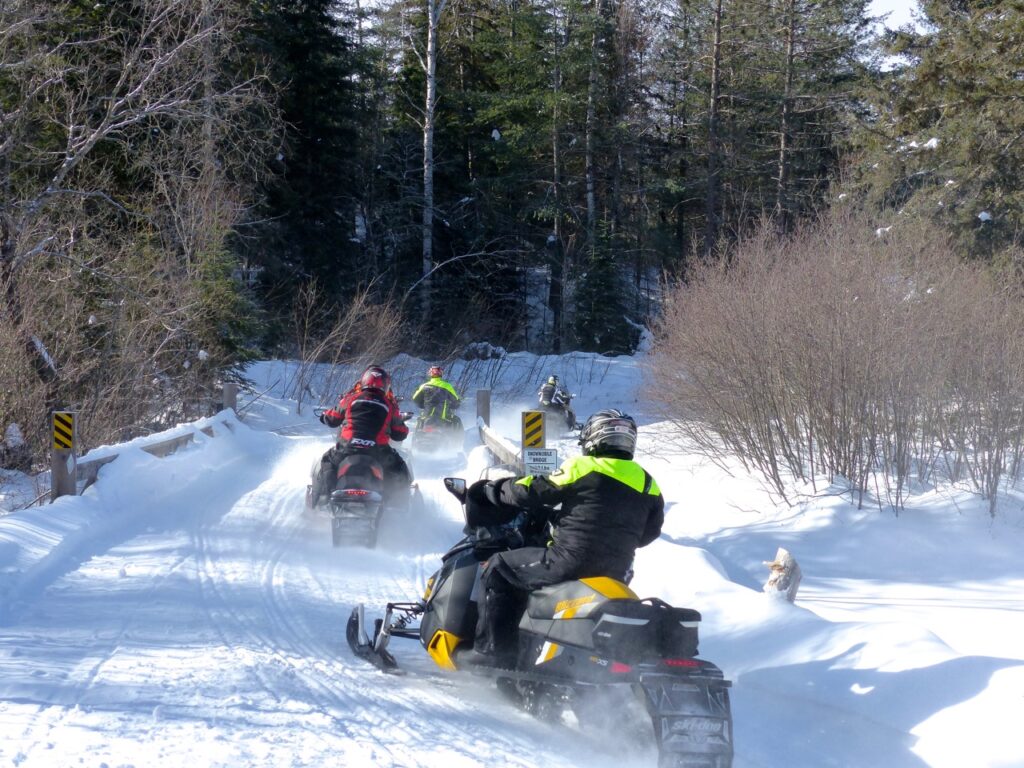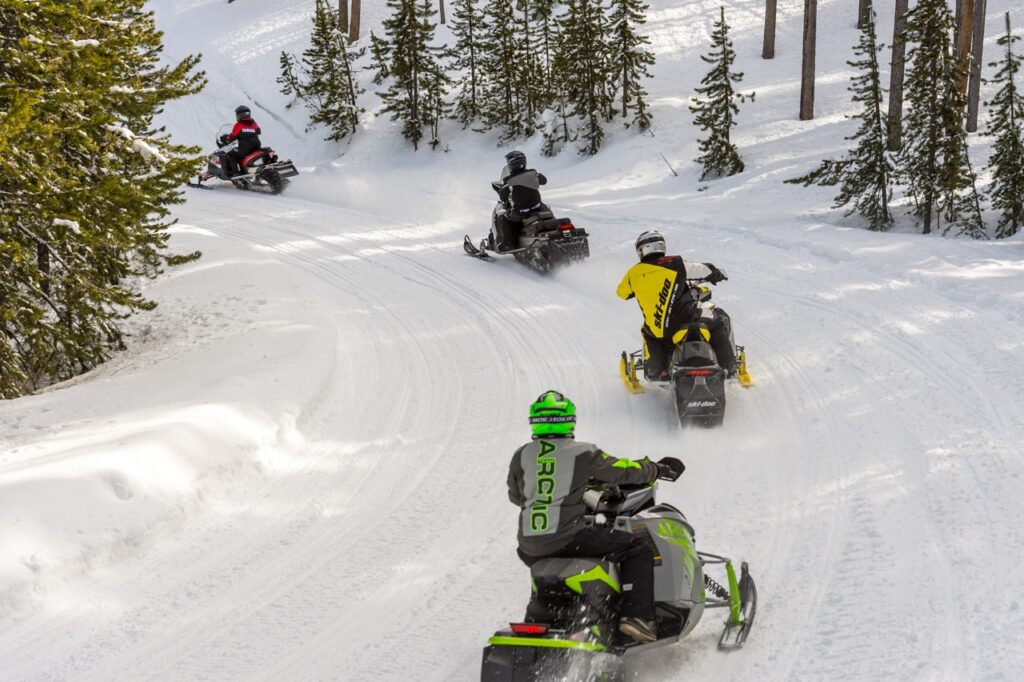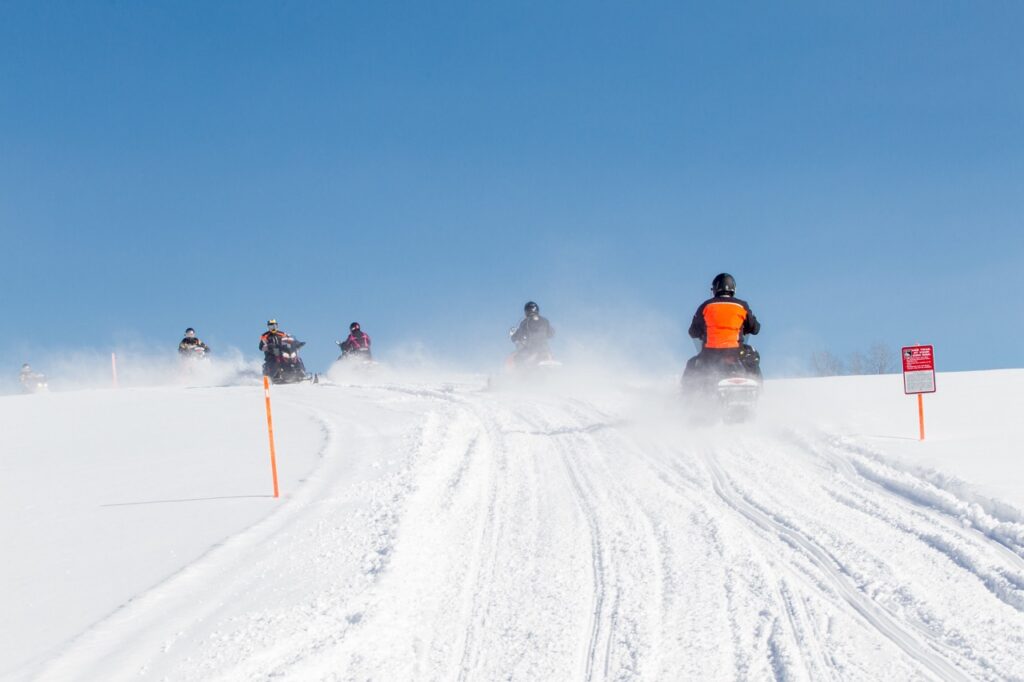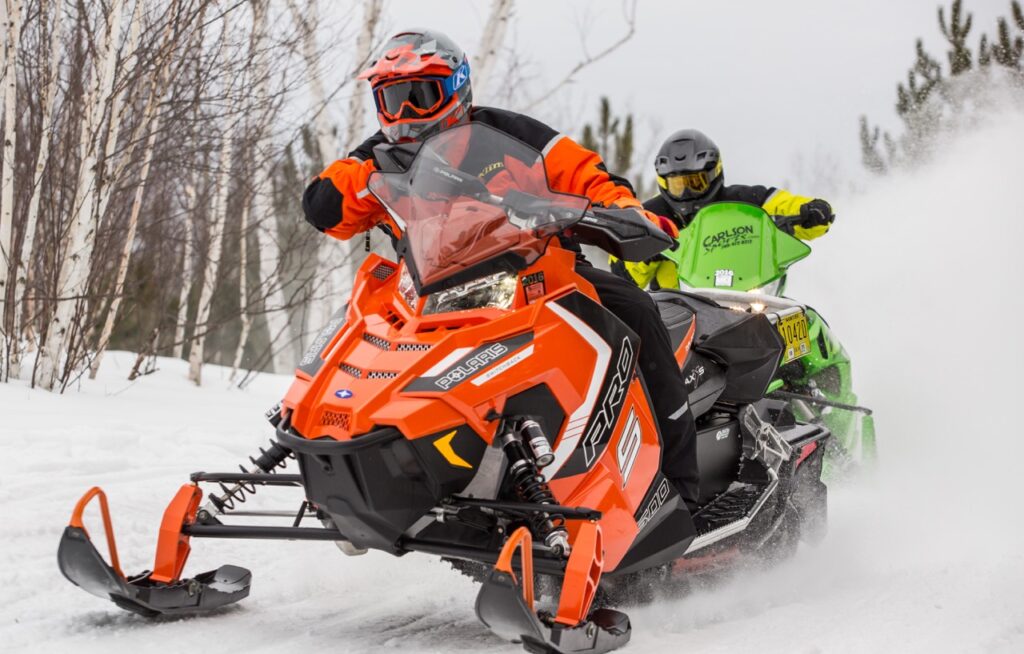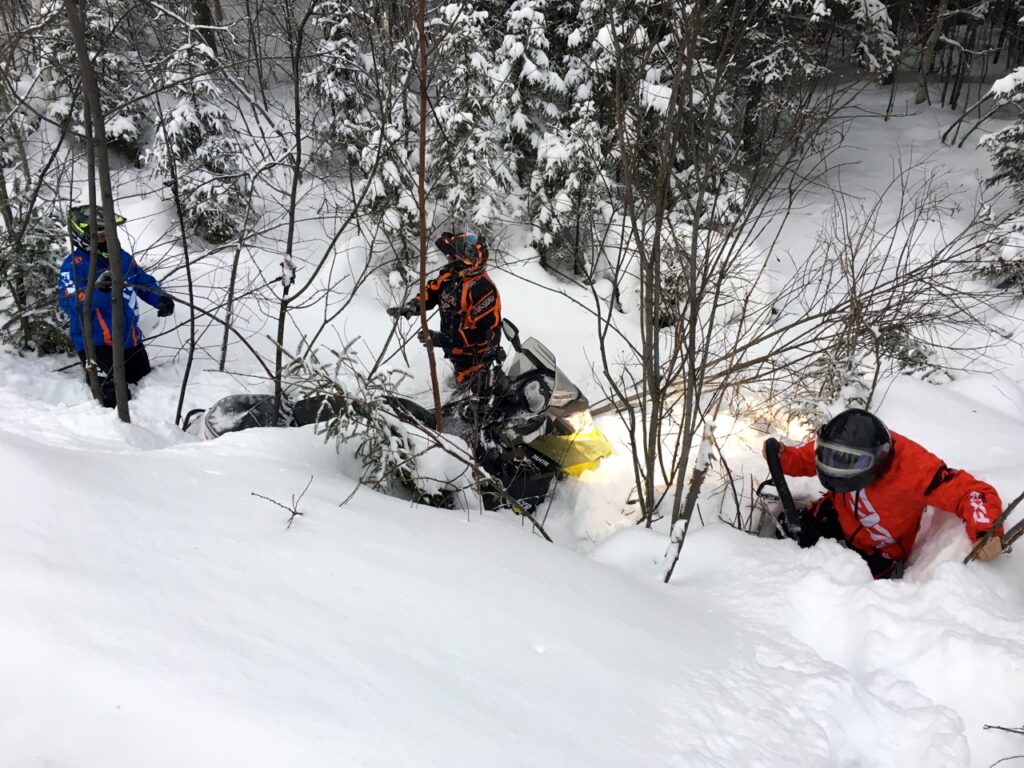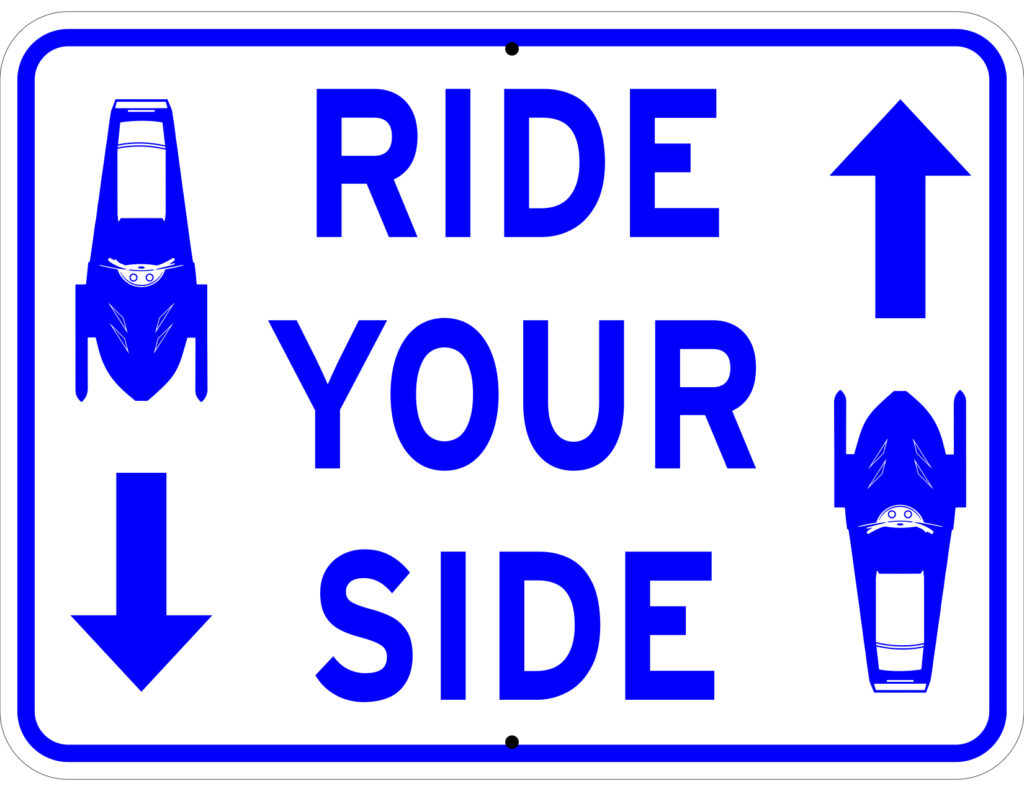Snowmobilers Benefit From Thinking Like Pros…
Related: Backcountry Riding Tips
Thinking like pros can save lives. It can prevent serious injury and permanent disability. Thinking like pros involves using advanced trail-riding techniques to avoid those “oh-shit!” moments we’ve all encountered. For the purposes of this post, I’m assuming you’ve already got the riding basics covered. So I’m going to look at real life trail challenges and offer real world solutions…
Learn From the Pro’s
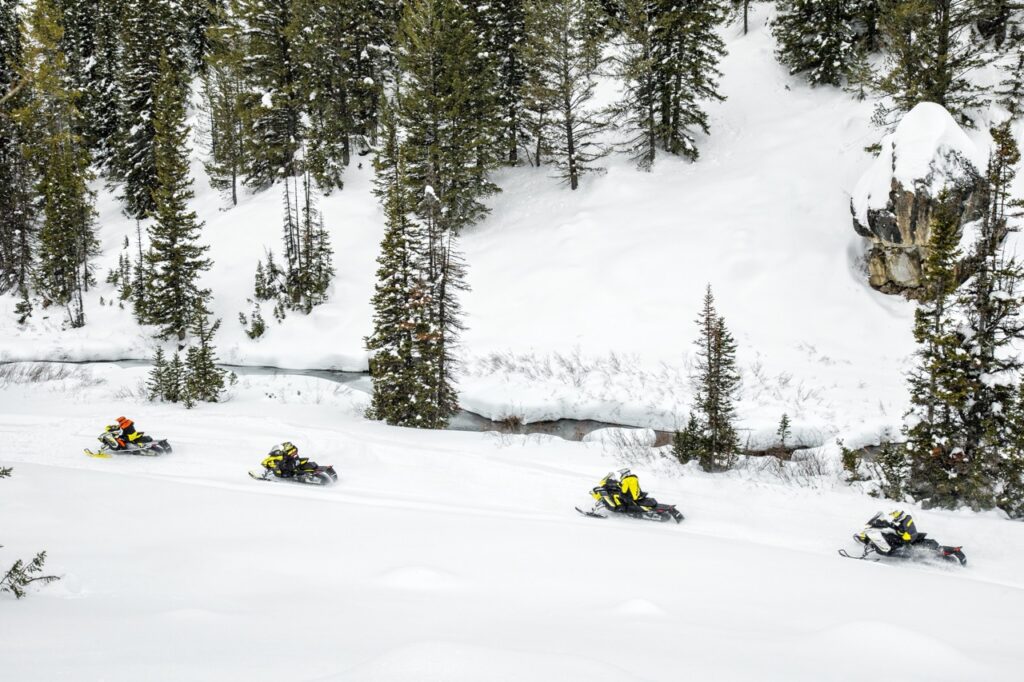
”By carefully gauging my abilities and limitations as well as those of riders around me, I can limit my risks. I also control the amount of risk I take by thinking clearly and anticipating the unexpected every second. Thinking like pros becomes second nature.” Shelby Mahon, professional racer and President of Backcountry Motorsports Media.
While I ride thousands of kilometres every winter as The Intrepid Snowmobiler, I don’t claim to be the best rider or know it all. So to get the best advice possible, I asked expert riders to share their knowledge, so please read on. And by the way, I’m not being sexist when I refer to a rider or pro as a “he” throughout. It’s just that over 85% of snowmobilers are male and are the most likely to need this advice.
No doubt avid snowmobilers of any gender can learn a lot from how the pro’s think. The pro’s are top echelon riders who test or race snowmobiles in carefully monitored, controlled and engineered settings. They benefit from the best machines, gear and protective equipment. Unlike trail riders, they also have impact absorbing crash barriers and immediately available emergency assistance.
These pro’s take smart risks. But before, they assess, train and practice regularly with coaches and other experts. That way, they are totally in charge of their performance and prepared to the best of their ability for anything that can happen. By only taking smart risks, the pro’s turn the odds sharply in their favour. They also avoid unnecessary or unknown risks, such as racing in an unpredictable and uncontrolled off-road location, such as a snowmobile trail.
Benefits of Thinking Like Pros
“Habit and reflex are two crucial mechanisms that become ingrained through practice and repetition. When they occur instantly, automatically and without conscious thought, a pro rides almost by instinct.” Craig Irwin, former professional racer
Thinking like pros means you are constantly able to improve your performance, to reduce your mistakes and to avoid unnecessary and unknown risks. Another benefit of thinking like pros is knowing how to realistically assess your own abilities, so you can remain in control.
As technology continues to enhance the performance and handling of snowmobiles, thinking like pros also means you can improve your ability to master your own sled. But most of all, thinking like a pro boosts the fun factor and maximizes your enjoyment of trail riding — and isn’t that what it’s all about?
Know Your Sled
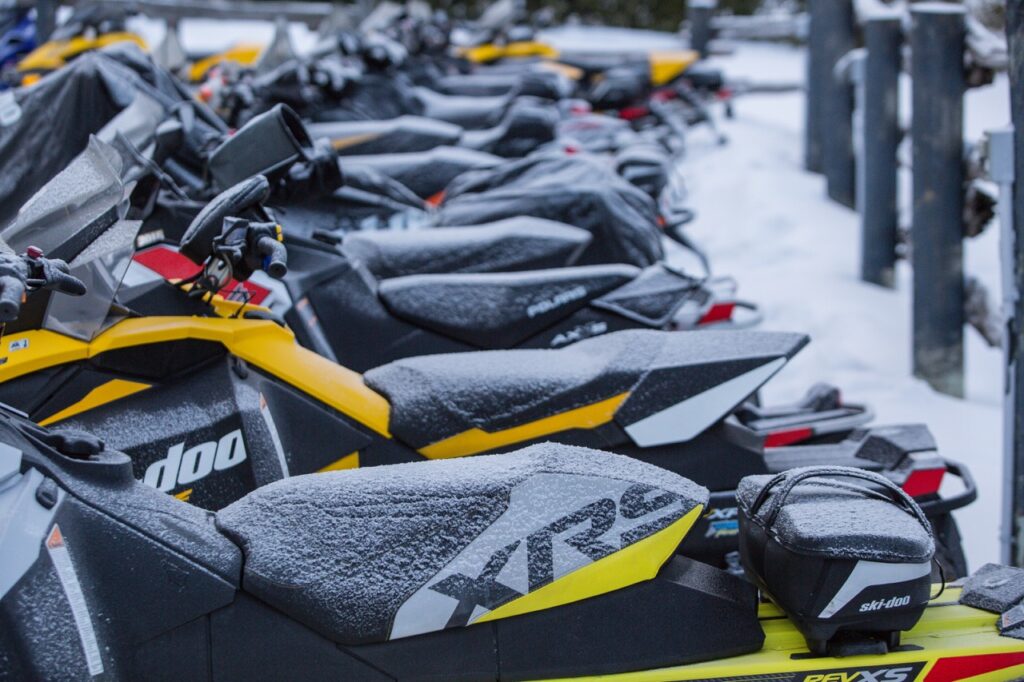
“A pro doesn’t allow peer pressure or emotion to influence his riding because he is confident in his own skills and abilities and knows what to do. The bottom line is that he completes the ride based on his own choices, riding for himself, not for the expectations of others.” Luke Lester, co-host of Snowtrax Television & former Canadian National Snowcross Champion
A pro learns the capabilities, shortcomings and quirks of their sled. And knows how to lever or compensate them to the best advantage. But each day on the trail is different. So a pro takes the time to get a ‘read’ on what to expect from their snowmobile in the conditions of the day. Then a pro adjusts their pace to this benchmark.
Too often, your snowmobile isn’t set up properly for the present conditions. Perhaps you were off on your test rides or settings. Or maybe you’re feeling distracted or out of sorts that day. What about if you’re riding someone else’s sled?
In any of these scenarios, thinking like a pro helps recognize and deal with any issues. But it takes tremendous maturity to ride at a controlled pace so as not to over ride your sled. Especially while trying to keep up with someone who is totally dialled in that day. Being a pro means resisting the temptation to charge ahead if you’re off your game. Excuses as to why you couldn’t keep up are cheaper than trying to explain why your snow machine is wrapped around a tree…or worse.
Protect Your Bod
Speaking of trees, impact protection is top of mind with the pro’s. That’s why they wear body armour. It’s their last line of defence against injury if something goes wrong. Many avid trail riders now also wear protective vests under their snowmobile jackets just in case.
Ride Bright
More riders are also thinking like pros by switching to snowmobile suits and helmets with high visibility colours. Hi-vis dramatically increases your chances of being seen — and avoided — by other riders in the day time or in poor visibility conditions. For night, riding, ensure your suit also has bright reflective piping or flashes.
Get A Grip
The pro’s use every advantage this can get. One of the most important comes from traction products like carbides and studs. These provide better grip and improved steering control. They offer greater confidence that the snowmobile will behave as intended. Traction products also deliver a few precious extra seconds of reaction time when it’s needed most.
Go Aware
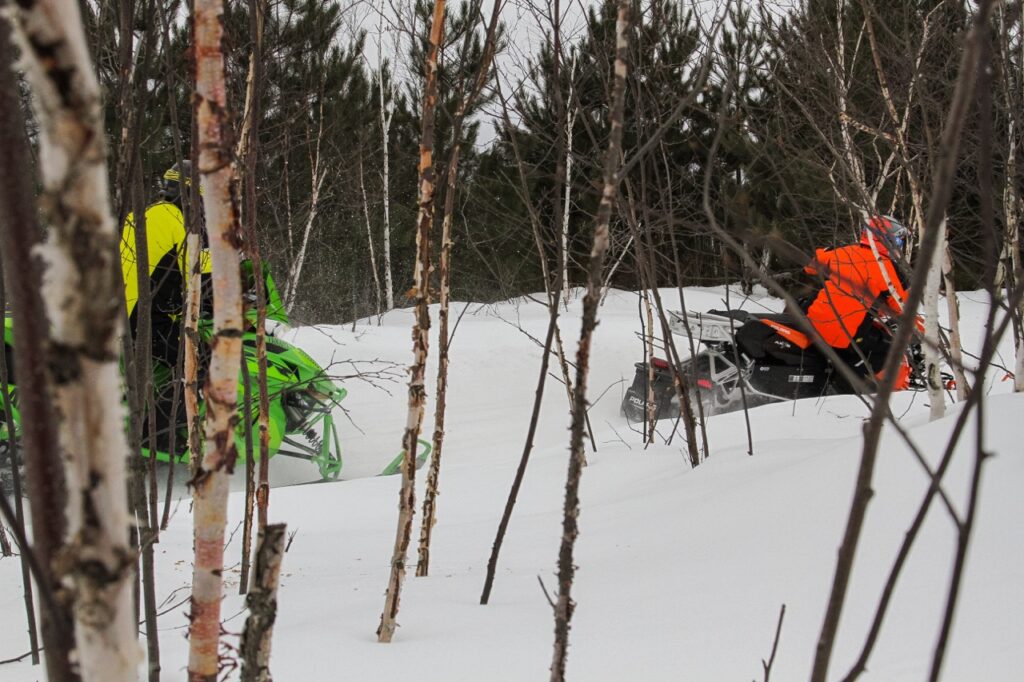
“The pro’s know that every snow surface is continually changing – bumps deepen, bare or icy spots form, and sometimes there’s an obstacle ahead. So you have to be totally alert and capable of adapting instantly by thinking and looking ahead – every second you’re on the sled.” Mark Lester, Supertrax International Magazine.
The pro’s are always have heightened awareness of the riders around them. Thinking like pros means that you know where the other snowmobiles in your group are positioned. And most important, that you keep track of the guy immediately behind. Just like with driving your car, mirrors are the best way to do this. Without them, you are effectively riding blind through almost 180 degrees to the sides and back. So install at least one mirror on your sled or use a wrist mirror.
Thinking like pros also means riding with heightened situational awareness. Also being acutely conscious of your riding environment and how it affects you. Prime examples include knowing how to ride on active logging roads, public thoroughfares and frozen lakes. And in early season, spring conditions and after meltdowns or lousy weather.
Ride The Trail
Thinking like pros involves focusing on riding the trail. Not on the rider ahead. Not on the signs. A groomed trail has defined edges. So concentrate on keeping your snowmobile between them and what’s happening ahead. This means paying more attention to where you’re about to go than where you’re at. Look down the trail to check for anomalies such as obstacles, sharp bends, holes, etc. to give yourself a few extra seconds to initiate the immediate evasive or manoeuvring action that can make the difference between triumph and tragedy.
Make Every Corner
Centrifugal force acts to pull any sled to the outside while cornering. The faster you’re going, the greater the pull. On left hand corners, your snowmobile is being pulled to the outside, towards the right edge of the trail. At the same time, any oncoming sled is also being pulled to its outside. This could cause it to drift into the centre of the trail, or worse, on to your side.
So before entering any corner, ensure you are in complete control and on your own side of the trail, while watching out for oncoming sleds. One valuable secret is to keep your eyes up and looking ahead into the corner to anticipate the line that your right ski will follow along the trail edge. Doing so will help prepare your brain and bod to initiate an appropriate and timely response to each turn.
As you enter the corner, shift your body weight slightly to the inside of your snow machine to counter balance the outside pull of the centrifugal force. Cover the brake lever with one finger and be prepared to “dip” the brakes (a slight tap) in the case of under steer (push) mid-turn. This technique will weight the skis for a split second and often brings the front end back to neutral (positive) bite and predictable, linear control.
At the same time, lean forward to place as much downward pressure on the inside ski as possible. As you come out of the corner, gradually shift your weight back to centre so that it is evenly redistributed. This will make your sled level and straight again.
Avoid Oncoming Sleds
No one wants to encounter oncoming sleds in a tight corner or at the crest of a hill. These are the two worst locations for seeing ahead to plan your next move. The first two approaching snowmobiles in the meeting groups are both at primary risk. But the two sleds running in second position immediately behind need to be very alert too.
In that instant of sighting each other, the two approaching leaders may have to take sudden evasive action. Now each second sled in each group has three machines upfront to avoid. That’s both leaders and the other oncoming second sled. And likely less time and space to do it in. Then there’s the real danger of also being hit by your buddies behind.
Thinking like a pro when entering corners or cresting hills means automatically shifting right on approach. It also means laying off the throttle slightly (and being prepared on the brake lever). This way, you can gain precious seconds of reaction time to escape in one piece.
Stay In The Light
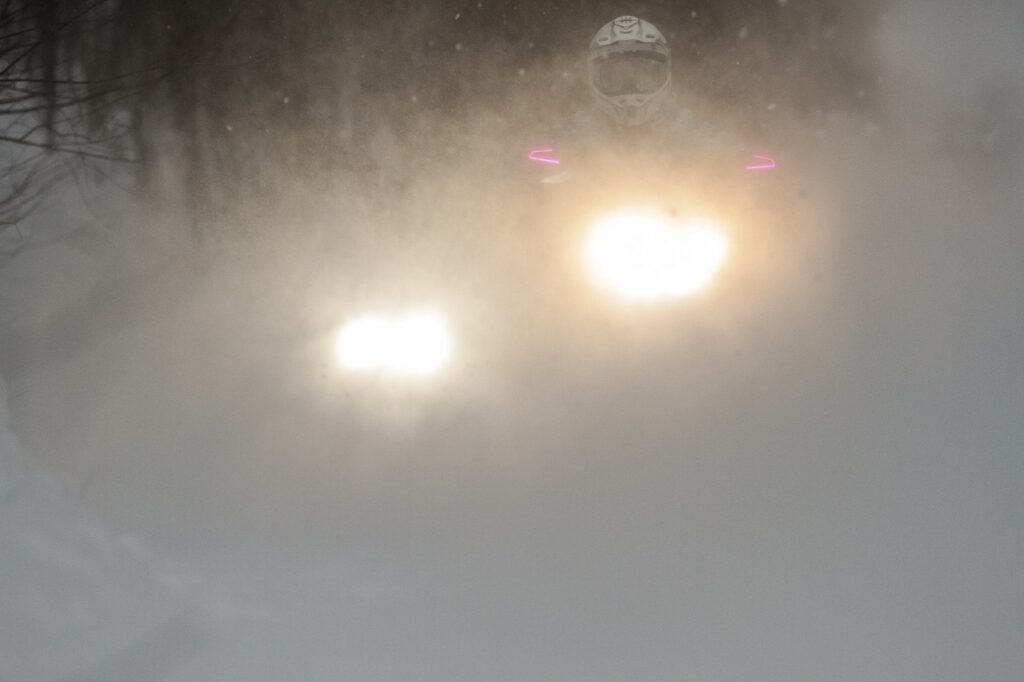
“It’s one thing to wear the gear, have a hot sled and ride hard, it’s totally another thing to think like a pro and really know how to ride.” Craig Nicholson, The Intrepid Snowmobiler.
Thinking like pros means always wanting to see ahead properly. Your headlight provides a limited nighttime range of forward visibility, typically about 60 metres. This is far less seeing distance than what you are used to while riding during daylight. Over driving or outrunning your headlight means your snowmobile is traveling so quickly that you can’t stop in time to avoid hitting whatever appears within its beam.
Effectively, you are running blind. Other snow machines aren’t a problem, because you can see their lights. But you can only see obstacles and animals with your own headlight. And only avoid them if you can stop in time. This is where an LED headlight can be a lifesaver.
Leave Space Between
The thrill of the chase may explain why so many snowmobilers seem to ride bumper to bumper, like a freight train. Tailgating virtually eliminates your reaction time and may not leave you any viable evasion options in an emergency. Essentially, it puts you at the mercy of the rider ahead and what warning he may or may not give you if a sudden problem occurs up front. By thinking like pros, you’ll learn to ride independently of the riders ahead and with enough room between snow machines to make your own moves.
Move Your Eyes
Target fixation occurs when all your attention gets focused on one thing, to the exclusion of everything else. A primary cause of target fixation is tailgating. You get lulled into the rhythm of the ride, constantly watching that taillight directly ahead. Soon, you are unconsciously following it without keeping track of anything else.
The cure for target fixation is the same as for tailgating. Back off from the sled in front and ride as if you are on your own. This way, you’ll be more alert. And your eyes will constantly be monitoring the trail and sleds ahead to give you plenty of warning and reaction time if there’s a problem. The same goes for intersections & road crossings, and changing terrain & surface conditions.
Modulate Your Braking
“The never fully rely on braking distances on the track. That’s why being fully aware of your surroundings at all times is critical. If I have to jump on the brakes, I instantly look for another way out and use my brain to get me through.” John Sharrard, former professional racer and owner of Accelerated Technologies
Slamming on the brakes stops the track from spinning. But as soon as it breaks traction with the snow, the whole track starts to slide forward taking a sheet of snow with it. Worst case, the sled may start to “back-in” to the corner. Without tremendous skill and reflex this is dangerous. If the track edge bites, you’ll “high-side” and the sled may barrel roll.
So the best braking technique for most trail riding situations is to learn to modulate the brakes to the edge of lock-up. This way, the track never completely stops. It maintains traction and therefore is much less likely to get sideways under you.
Avoid Snow Dust
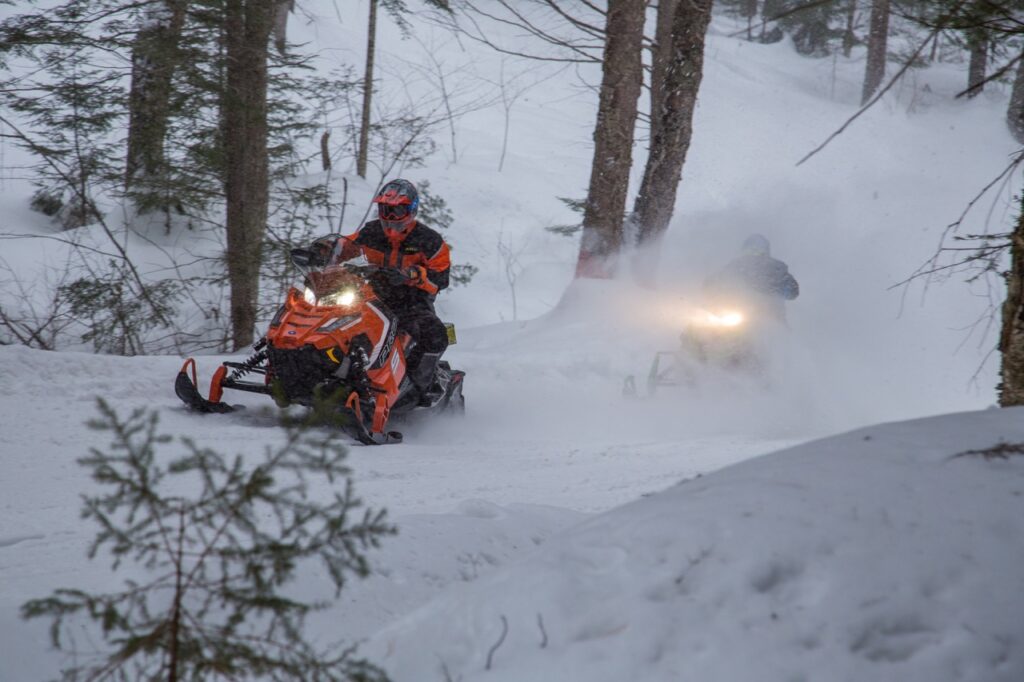
Again, thinking like pros means wanting to see properly. Snow dust, which mostly occurs when the snow is cold and dry, may be the Number One cause of poor trail riding visibility. Spinning tracks throw up white clouds behind them, making it impossible to see the riders in front or behind.
So you need to back off from the snowmobile ahead until you can see clearly for at least 100 metres in front. When snow dust is a factor, make an agreement with your group to space yourselves out more than usual to stay out of each other’s “dust”. Just be sure to wait at intersections to make sure riders far behind turn the right direction.
Dodge Snow Magnets
Snow magnets are that loose snow just off the edge of the groomed trail. It’s lying in wait like quicksand to suck a wayward ski off the trail. Caught by surprise, you may suddenly find your whole sled being pulled into the rhubarb. This is especially difficult to overcome when that side of the trail slopes downhill, because gravity boosts that off-trail pull.
Obviously, the best way to avoid being grabbed by snow magnets is to keep your right ski on the trail. Failing that, you can save the day by reacting quickly with body weight thrown to the left, even standing on the left running board and lifting up on the right handlebar. The idea is to get that errant right ski up and out of the snow magnet’s clutches fast.
If the terrain is downhill, attempting to ride it out may be futile if your snowmobile persists in heading deeper into the snow and farther from the trail. If so, a deliberate sled burial may keep you from riding into even worse trouble.
Now You’re Thinking Like Pros
If you’ve learned even one way to improve your trail riding skill and ability from this post, you’re on your way to thinking like pros. If you’ve reconfirmed skills and abilities you already have, you’re on your way too. And if you’ve changed one poor riding habit as a result of one of these advanced trail riding techniques, you’re definitely on right on track.
Thinking like a pro is an on-going attitude and state of mind. It’s about knowing yourself and taking smart risks. It’s about always practicing, improving and taking pride in your learned abilities. Thinking like pros is a great way to make trail riding more fun too. But most of all, thinking like pros is about arriving alive to ride another day — and helping to ensure that those sharing the trail do too!
Like This Post? Follow Me on Facebook
The tips and advice in this blog are the opinions of the author, may not work in every situation and are intended only for the convenience and interest of the reader, who has the personal responsibility to confirm the validity, accuracy and relevancy of this information prior to putting it to their own use.

